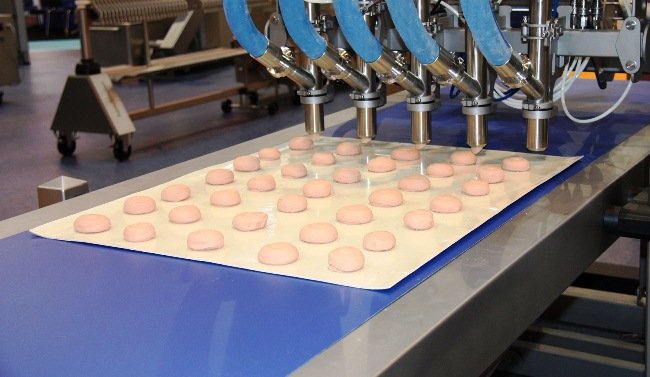Inside BENEO’s new pulse plant: pioneering sustainable protein from faba beans
Innovation is viewed as the application of better solutions that meet new requirements, unarticulated needs of consumers, or existing market needs. This is accomplished through more products, processes, services, technologies, or business models that are readily available to markets, governments and society.
Talking about the need for innovation in the food sector in India, consider the following figures: India produces 205 million tons of fruits and vegetables annually and is the second largest country in farm production in the world. Unfortunately, the processing percentage is poor only seven percent of what is grown is processed. In contrast, the USA (65 percent), China (23 percent) and Philippines (78 percent) are far ahead of India in reducing wastage and enhancing the value addition and shelf life of farm products.
This is an alarming situation for India as a large volume of our agricultural produce is wasted. About 35 percent of the fruits and vegetables grown are wasted annually due to poor storage facilities, amounting to a revenue loss of `500 billion. Also, 80 percent of the vegetables rot due to high water content and lack of processing facilities, resulting in a revenue loss of `125 billion.
The food processing sector takes care of farmers and ensures employment for skilled and unskilled, educated and non-educated labour. What we need is innovation in the food industry to change the current status and growth rate of the food industry.
Innovations in the food industry
Innovations in the food industry are of two types.
• Technological innovation : Technology Forward
• Consumer solutions innovation : Market Backward
In the tables below are a few representative examples of innovations which have happened in the food industry. In India, there are two types of companies. One is the trendsetters, who make innovative products and invest in research to create these. The other type follows the trends and copies the existing innovations. Both industries are important, but the first type is much more important for growth of the sector.
Challenges in Food Innovation
There are a number of reasons why the food industry is lagging behind in innovation. One prime hurdle is that Indian consumers are not yet ready to experiment with new products. There are cases when the industry has launched a new product that was ahead of time, only to have it rejected by the consumer, even though it was innovative. Atta mix for healthy food and powdered fruit beverages are two examples of innovations that did not work in the market.
An equally serious issue is the regulatory challenges with new products. So far, there was no clarity on product approval and many new formulations got stuck in regulatory hurdles; but thanks to new proprietary regulation issued recently by FSSAI, we can hope that innovation will soon be fuelled.
The food industry also suffers from low investment in R&D. Only few companies have full-fledged R&D centres which bring out innovative products. For most, the return on investment on R&D remains a concern.
Possible Government Initiatives for the Sector
The Government of India has recognized the importance of the food processing sector for the country’s economy. In the last two years, it has started new schemes like Start-up India to encourage innovative business and entrepreneurship. But the schemes have not yet been popularised on the ground in the food business. To convert these schemes into businesses, incubation centres for food industry should be started with industry partnership.
There is, currently, no incentive for innovation in food industry. Even if the industry is bringing innovative products in the market with a struggle, there is no actual sup-port from the government. There are no incentives and rewards by government and society. As per a survey, only 10 percent of new products achieve success in the market. There is a need to create an eco-system that will nurture innovation and also provide some tax benefits if products meet the innovation criteria.
Teaching and Research
Institutes to Support Innovation
Our current food technology education can also do with an upgrade. There are over 300 food technology/nutrition colleges in India. The main focus of all the colleges is on the technical side; hardly any institute gives emphasis on innovation and consumer needs. The current syllabus of food technology does not cover subjects like innovation, creativity, design etc.
There are very few NGOs/organisations that are working in the space of innovation support. Some of them are listed below:
• Marico Innovation Foundation (www. maricoinnovationfoundation.org)
• Villgro (http://www.villgro.org/)
• Venture Center at NCL, Pune: A CSIR Initiative for technology businesses (inventors and scientist entrepreneurs)
• IIT Kharagpur (http://www.step-iit.or)
One good initiative is by the AFST Mumbai and ICT Mumbai, which have introduced a program for students called Project Avishkar/IPL Innovation. Its objective is to fuel and nurture innovation among students and provides them a platform to showcase their ideas to the industry. Possibly, some of these young innovators would come up with workable and novel ideas for the food industry.
To sum up, the food industry has the potential to trans-form India’s economy. It can provide lakhs of jobs, sup-port the agricultural sector, and boost both internal and external trade. The need of the hour is to harness this potential through investment, innovation, and regulation, and to build an ecosystem in which the government, regulators, agriculturists, manufacturers, scientists, educational and research institutions and other stake holders collaborate to create a vibrant, expanding food industry.

